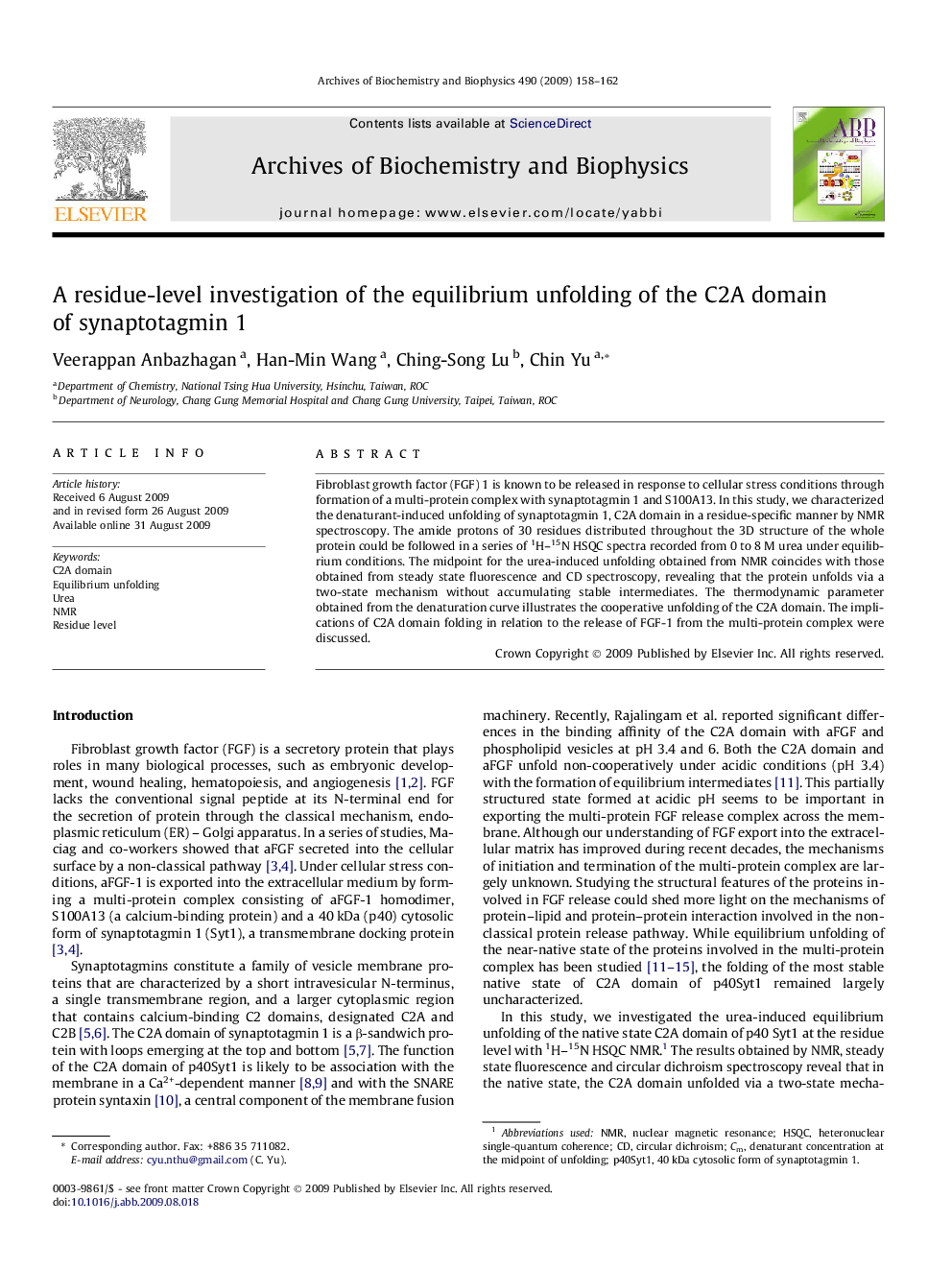| Article ID | Journal | Published Year | Pages | File Type |
|---|---|---|---|---|
| 1926122 | Archives of Biochemistry and Biophysics | 2009 | 5 Pages |
Fibroblast growth factor (FGF) 1 is known to be released in response to cellular stress conditions through formation of a multi-protein complex with synaptotagmin 1 and S100A13. In this study, we characterized the denaturant-induced unfolding of synaptotagmin 1, C2A domain in a residue-specific manner by NMR spectroscopy. The amide protons of 30 residues distributed throughout the 3D structure of the whole protein could be followed in a series of 1H–15N HSQC spectra recorded from 0 to 8 M urea under equilibrium conditions. The midpoint for the urea-induced unfolding obtained from NMR coincides with those obtained from steady state fluorescence and CD spectroscopy, revealing that the protein unfolds via a two-state mechanism without accumulating stable intermediates. The thermodynamic parameter obtained from the denaturation curve illustrates the cooperative unfolding of the C2A domain. The implications of C2A domain folding in relation to the release of FGF-1 from the multi-protein complex were discussed.
